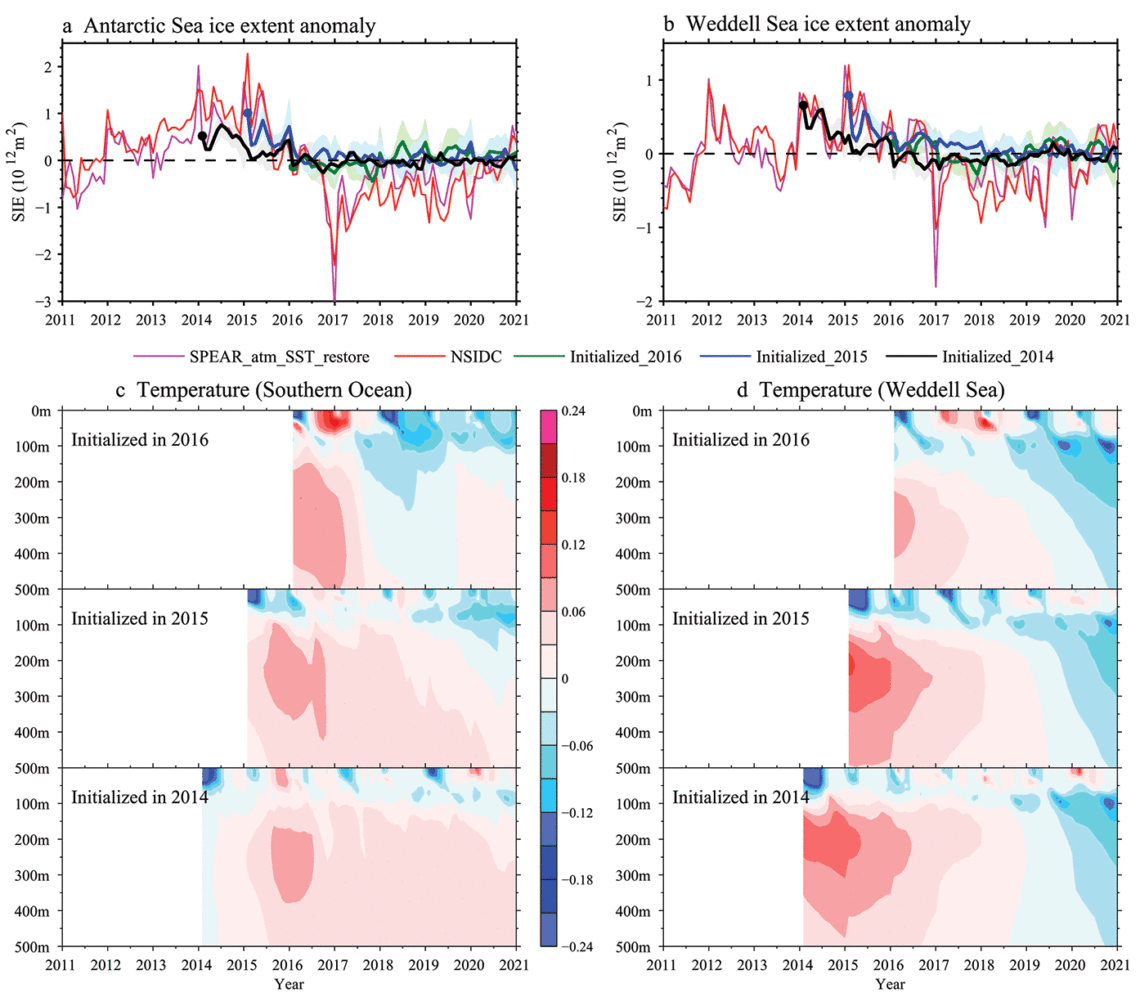January 19th, 2023
Key Findings
- The authors used a coupled climate model to reproduce the dramatic decline in Antarctic Sea ice extent (SIE) seen in late 2016, and found that the subsurface Southern Ocean (SO) plays a smaller role in this event than the atmosphere.
- The record SIE retreat in late 2016 is largely the result of both a strong negative Southern Annular Mode (SAM) event and an atmospheric circulation pattern driven by the tropics, while the subsurface SO plays a much smaller role.
- The subsurface ocean plays a crucial role in the multiyear Antarctic SIE shift over the last decade. The persistent SIE retreat after 2016 is preceded by subsurface warming.
- Decadal hindcasts initialized in 2014 and 2015 indicate that approximately half of the difference in SIE between years 2016-2020 and 2011-2015 can be attributable to subsurface warming.
- The simultaneous variations in the atmosphere and ocean after 2016 have further amplified the decline in Antarctic sea ice extent.
Liping Zhang, Thomas L. Delworth, Xiaosong Yang, Fanrong Zeng, Feiyu Lu, Yushi Morioka and Mitchell Bushuk. Communications Earth and Environment. DOI: 10.1038/s43247-022-00624-1
One of the most puzzling observed climate events in recent years was the dramatic decline in Antarctic Sea ice extent (SIE) in late 2016. It remains unclear to what extent this low sea ice extent can be attributed to changing ocean conditions. This SIE retreat persisted for several years after 2016, thus becoming a multiyear shift.
In this study, the authors used a coupled climate model to reproduce these Antarctic SIE characteristics and found that the subsurface Southern Ocean (SO) plays a smaller role in the 2016 SIE extreme event than the atmosphere. However, they also found that the subsurface SO is critical to the persistence of the low SIE state after 2016 and provides a source for multi-year predictability.
The authors’ decadal simulations predicted that subsurface warming would persist and gradually destabilize the ocean from below, in turn reducing SIE over a multiyear period. A sensitivity experiment shows that the multiyear SIE shift would not occur if the anomalously warm subsurface SO in 2016 were replaced by colder conditions.
It is worth noting that the subsurface heat anomaly accounts for approximately half of the multiyear Antarctic SIE shift. The simultaneous atmosphere, ocean, and/or their coupled variabilities after 2016 can further amplify the Antarctic SIE retreat.
This study provides critical new understanding of the potential factors behind observed multi-year change in Antarctic sea ice and upper ocean conditions. Further, this research raises the possibility that such changes may be predictable on multi-year time scales. The authors are currently working on developing modeling tools to be able to predict such future changes.



